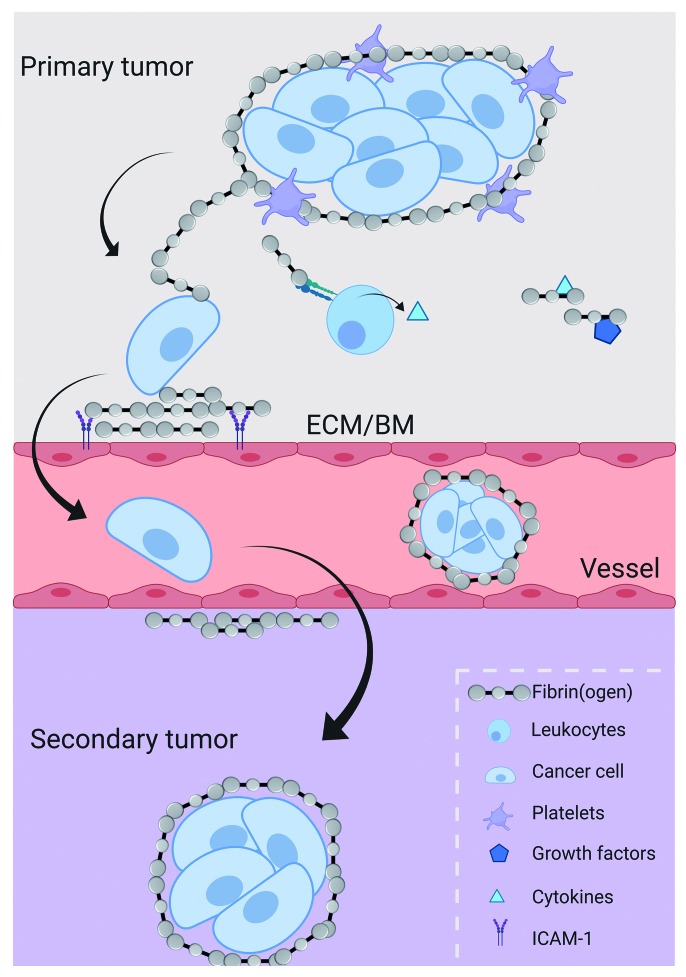Figure 2.
Schematic diagram of pro-tumorigenic mechanisms involving fibrin(ogen). Fibrin(ogen) binds and surrounds cancer cells, forming a structure that protects tumors from immune cells, in a process that may be enhanced by attracted platelets. By interacting with endothelial cells via intercellular adhesion molecule-1, among other receptors, fibrin(ogen) contributes to the extravasation, cell migration and establishment of secondary tumors, while the link with leukocytes via αMβ2 results in the production of pro-inflammatory cytokines (e.g., interleukin-1β) rendering an inflammatory microenvironment that potentially favors tumor progression. The presence of fibrin(ogen) surrounding the tumor, in addition to its protective role, may generate thrombotic events which could prompt a worse clinical outcome. Finally, fibrinogen’s ability to bind different growth factors further contributes to tumor maintenance. This figure was adapted from Simpson-Haidaris et al.72 and prepared using BioRender.com. BM: basement membrane; ECM: extracellular matrix; ICAM-1: intercellular adhesion molecule 1.

